

Damion Smy
Boxy new KGM Musso unveiled to take on HiLux and Ranger ahead of Australian launch
8 Hours Ago
If outright efficiency is your goal, it's hard to go past the Yaris Hybrid. Cheap running costs aside, it's fun to drive if a bit pokey inside.
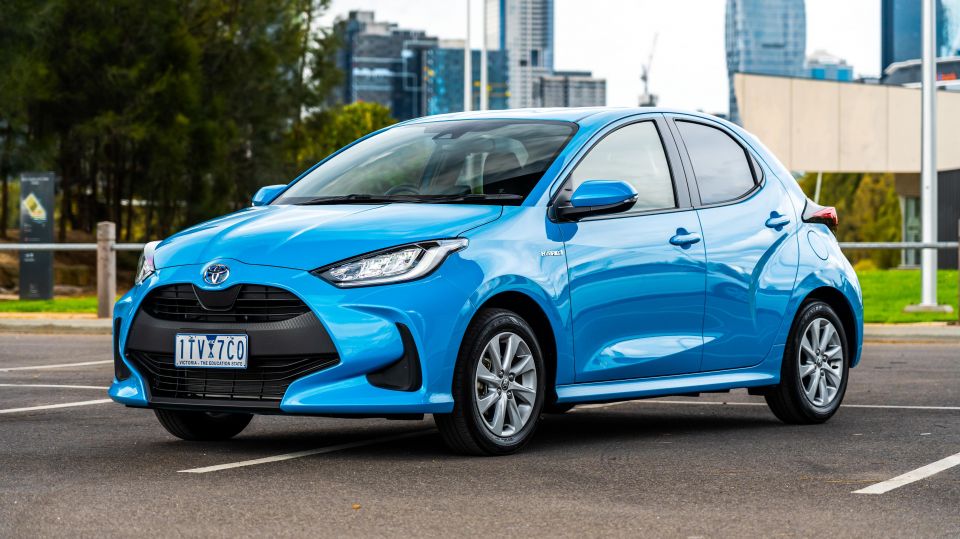
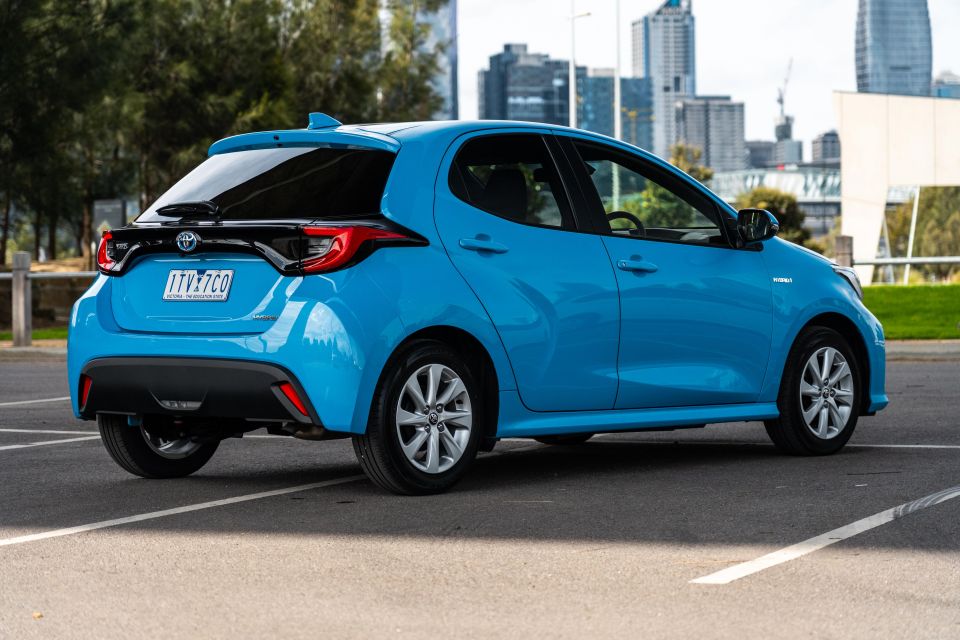

Quickly see how this car stacks up against its competition. Select any benchmark to see more details.
Where expert car reviews meet expert car buying – CarExpert gives you trusted advice, personalised service and real savings on your next new car.
Once upon a time the Toyota Yaris was one of Australia’s cheapest cars – that’s now a distant memory…

The current generation launched in 2020 to much hype around the significant markups over its ageing predecessor. For the first time, even the base Yaris wore a sticker that didn’t start with a 1.
Offering a full assistance suite across the board and Australia-first hybrid options for the nameplate were strong suits from its arrival, but that hasn’t been enough to see the Japanese city hatch reclaim top-seller status in its segment.
The hybrid drivetrain makes the little Yaris one of the most efficient new vehicles on sale today, with a claimed combined fuel consumption rating of just 3.3 litres per 100km.
Last year 2979 units found homes Down Under; a 33.7 per cent reduction in volume compared to the year prior. These days the Light Passenger segment is dominated by the MG 3, which owns the budget-friendly space the Yaris once dominated.
That’s not to say the Yaris doesn’t have its merits. And, while at launch its pricing was a sore point, its rivals have been subject to significant price increases in recent years, meaning the Toyota isn’t quite the premium-positioned offering it once was.
Here, we have the mid-spec Toyota Yaris SX Hybrid, to see if it’s got enough gear and go to be the sweet spot of the range.
These days the thought of a $25,000 or $30,000 light car isn’t out of the ordinary, but it was quite a big deal when this generation of Yaris first launched.
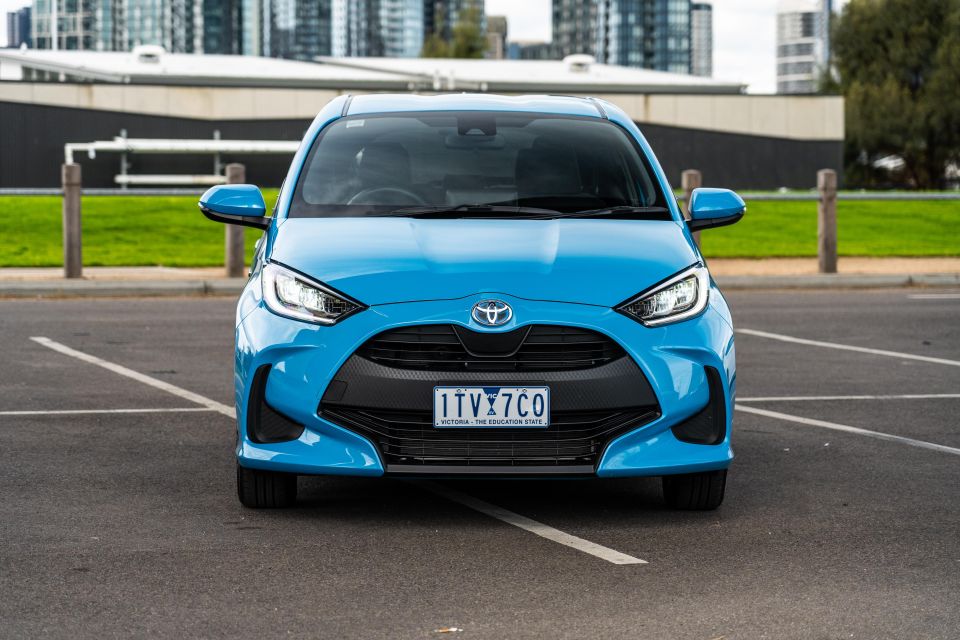
Our Yaris SX Hybrid tester starts from $30,030 before on-road costs, though you can get the petrol-only version of the same trim level for $2000 less. Drive-away, you’re looking at around $34,220 in Victoria.
While the industry continues to bump prices up, this mid-spec Yaris Hybrid is basically asking base Corolla Hybrid money. If you’re happy without some of the features available in the Yaris SX, the Corolla Ascent Sport Hybrid in either hatch or sedan bodies will offer more space and more performance, and nicer cabin presentation.
It’s worth noting the SX Hybrid is the cheapest petrol-electric Yaris you can buy in Australia, as the entry-level Ascent Sport continues to be petrol-only in 2023. It’s a shame, because a circa-$26,500 base hybrid could be a goer.
Like-for-like rivals are non-existent in Australia, with no rival in the Light Passenger segment offering hybrid power. That said, $30,000 will get you a well-specified Kia Rio, Mazda 2, Suzuki Swift or Volkswagen Polo, or lower grades of vehicles from the size segment above.

2023 Toyota Yaris pricing:
Prices exclude on-road costs
Buy your new car without the stress. It's fast, simple and completely free.

Great service from Travis and team, second time I have used this business would not hesitate to recommend them to anyone
Craig C.
Purchased a Ford Ranger in Sunshine Coast, QLD
CarExpert helped Craig save thousands on his Ford Ranger, now let us save you on your next new car.
Find a dealWhile not as visually stimulating as its exterior, the Yaris’s cabin remains a functional and liveable space.
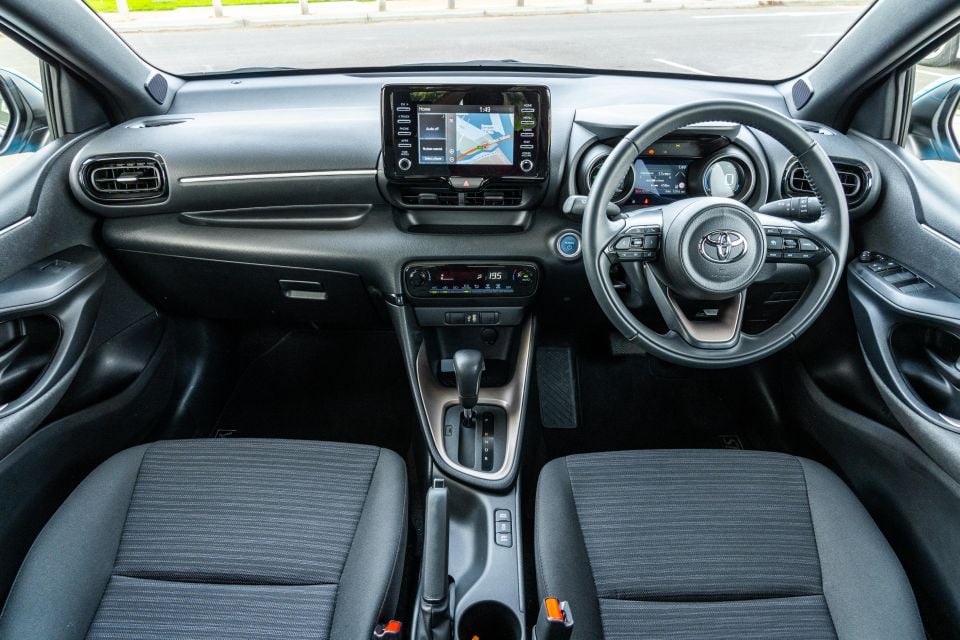
Toyota has clearly tried to keep a level of familiarity about the cockpit, with a fairly dated looking shifter and an old-school striped pattern to the seat fabric, as well as buttons and switchgear common to a slew of other Toyotas.
It’s all finished in a largely black and grey colour scheme in the SX too, which makes it less offensive compared than the brown leatherette in high-spec versions of the related Yaris Cross, for example.
There are partially digital instruments and a high-set touchscreen to bring the Yaris into the digital age compared to its predecessor, but in typical Toyota style everything is quite basic to appeal to a wider demographic, even if the Yaris has historically had a youthful element to it.
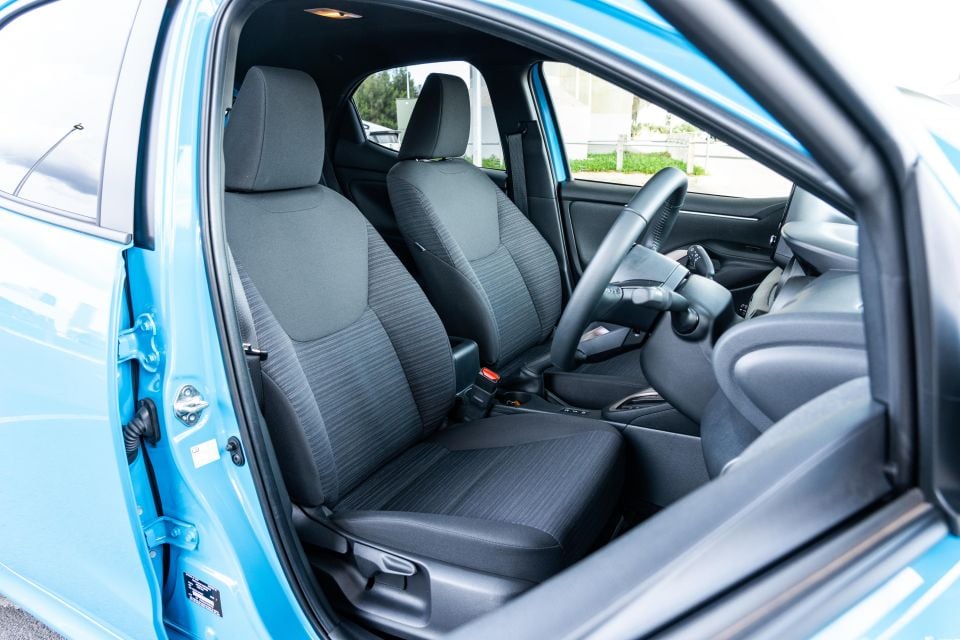

If you’re usually driving solo, the Yaris has plenty of space up front for you and one passenger. The tall roofline and big first-row glasshouse make for an airy cockpit, and the seats themselves are quite comfortable.
All the touchpoints feel pretty good for the segment, with a nice leather-trimmed steering wheel and chunky handles for the gearshift and handbrake, but nothing feels particularly high-end like you might find in a Volkswagen Polo.
The dash top is soft-touch, but even the door inserts are a mix of hard plastic and materials that look like they belong on a cheap headliner. Considering the Yaris’s more premium price point these days, it’s a little naff.
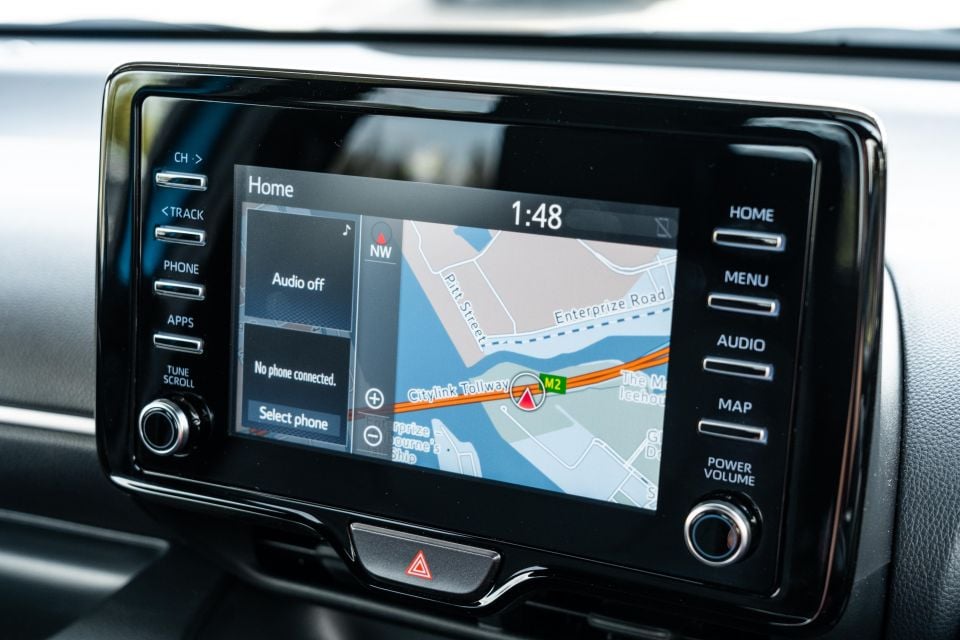
Toyota’s infotainment tends to cop a bit of flack for its simplicity and dated graphics, and while I tend to agree with the criticisms of my colleagues, at least it does what it says on the tin.
Here we have a 7.0-inch touchscreen which offers a full suite of features (with the exception of Toyota Connected Services), including satellite navigation, wired Apple CarPlay and Android Auto, as well as DAB radio.
Sure the graphics are a little dated, load times are slow and the display quality isn’t up there with the best in class, but for younger buyers as well as older, it should do everything with few troubles.
I found it all worked fine in my week of testing, and other than the occasional laggy load time, it’s all pretty easy.
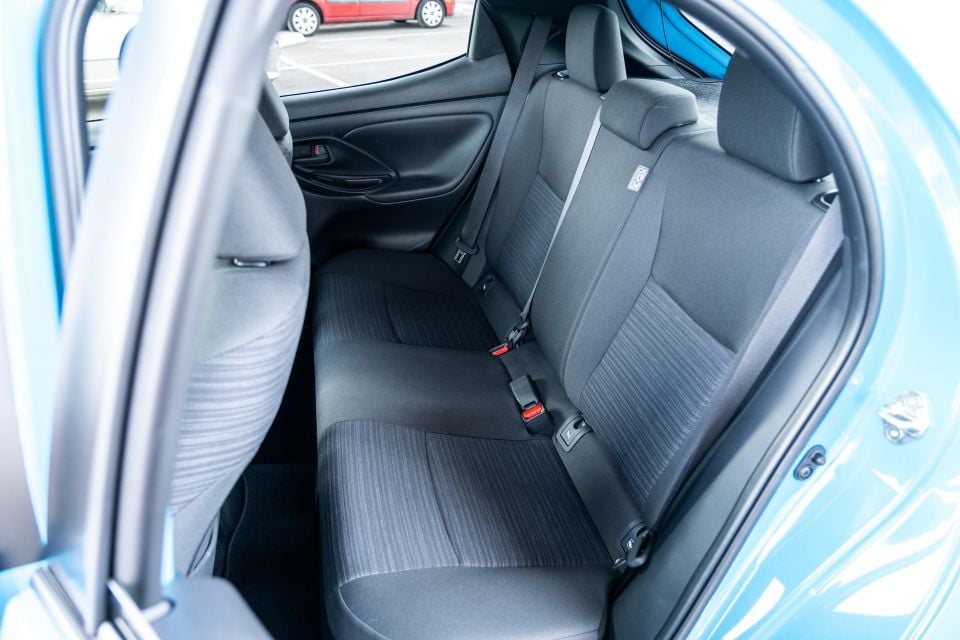
Given this is a light hatch, we were never expecting limo levels of rear passenger space. With that said, the Yaris can’t match the likes of the Kia Rio and Volkswagen Polo for second-row accommodation.
Headroom is fine but knee room is on the tighter side for rear passengers, particularly behind a taller driver.
At 6’1 I wouldn’t have been comfortable sitting behind my preferred driving position for an extended period of time. Kids should be fine back there, and there’s the requisite ISOFIX anchors for the window seats and top-tether points for all three rear positions.
Other than that there are some bottle holders in the doors, but that’s about it.
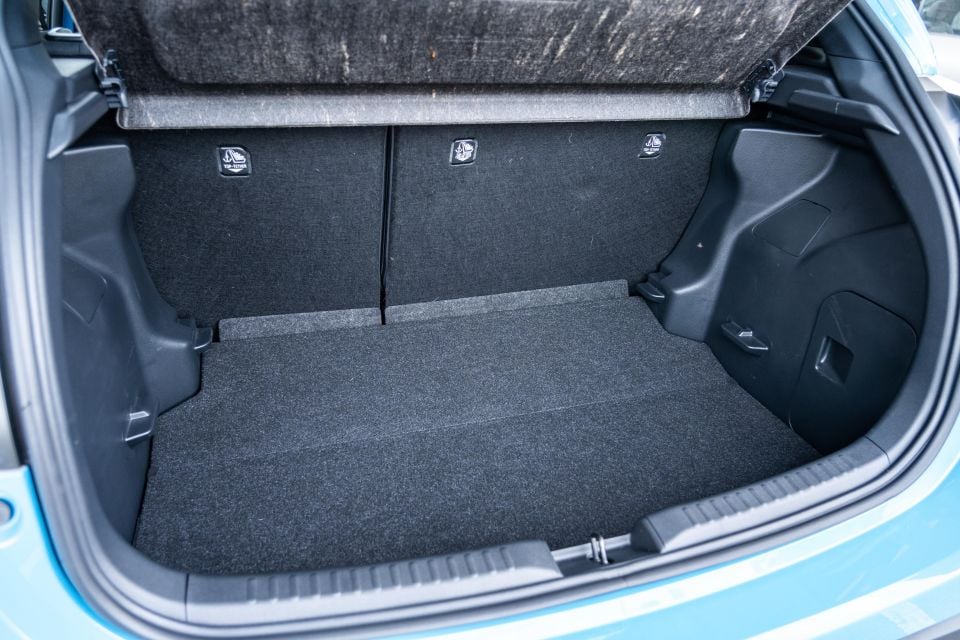
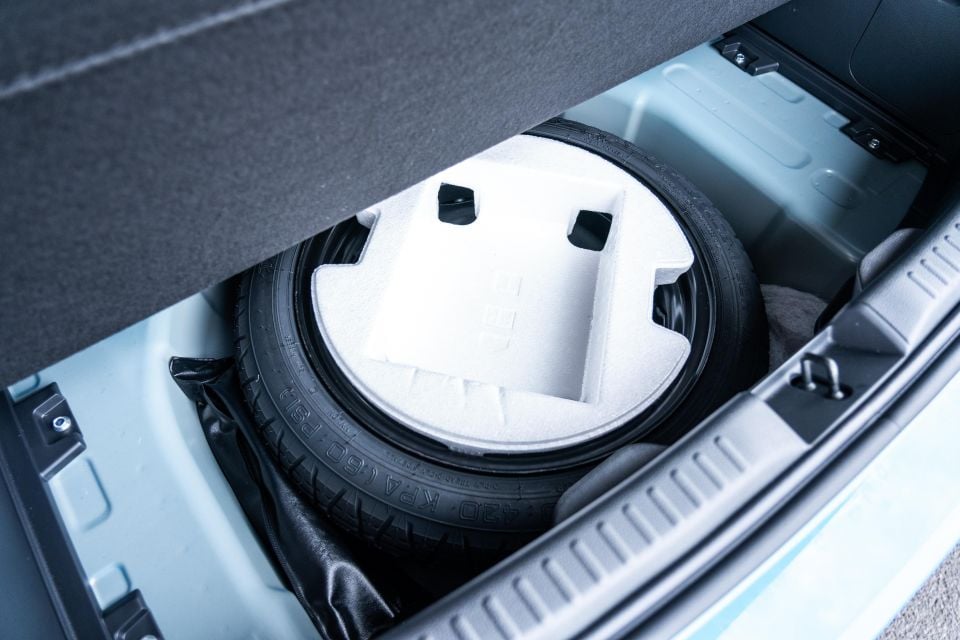
The Yaris quotes a boot capacity of 270 litres, which is more than most versions of the Corolla Hatch but also outdone by the bulk of segment rivals.
It seems odd to me the related Yaris Cross has a far more substantial 390 litres despite the shared platform and similar dimensions, and leads me to say go for the crossover (you rarely hear me say that) if you like the look and feel of the Yaris but intend to use the rear seats and boot more regularly.
A space saver spare wheel lives under the boot floor.
The Yaris Hybrid is powered by a 1.5-litre petrol-electric hybrid system.
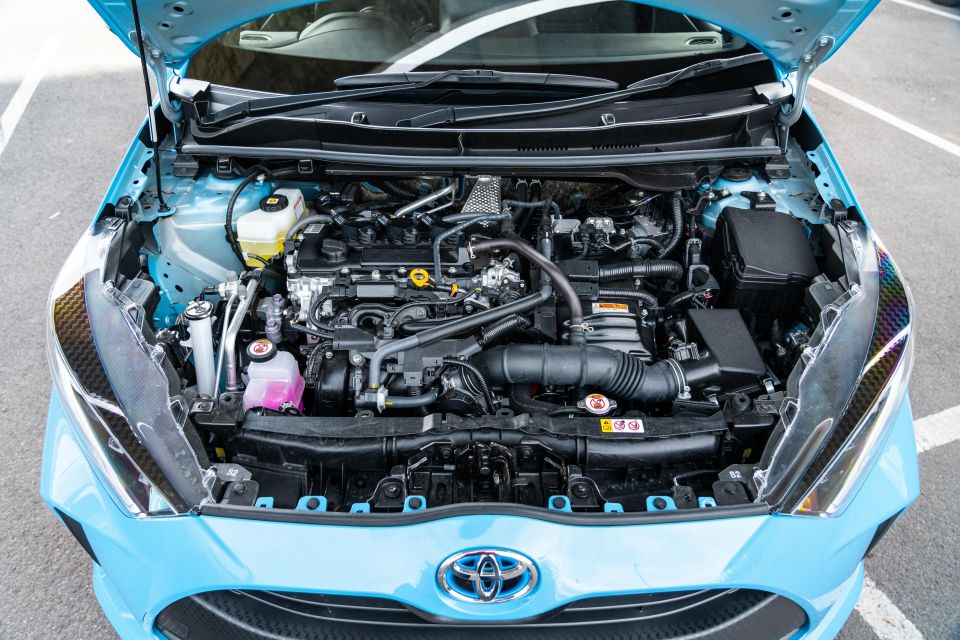
On its own, the Atkinson Cycle 1.5-litre three-cylinder petrol generates 67kW (5500rpm) and 120Nm (3800-4800rpm). Hardly inspiring when the petrol-only Yaris’s 1.5-litre petrol develops 88kW and 145Nm.
Combined with a 59kW/141Nm electric motor, the drivetrain develops 85kW. There’s no system torque figure listed.
There’s also a 4.3Ah lithium-ion battery on board, with a voltage of 177.6V. That converts to 0.7637kWh in capacity, which is quite small.
Officially, the Yaris Hybrid claims to use 3.3 litres per 100km on the combined cycle – as little as 2.8L/100km in urban environments. CO2 emissions are rated at 76g/km.
The fuel tank holds 36 litres, and can run happily on cheaper 91 RON unleaded.
As we’ve seen in other Toyota model lines, the brand’s TNGA platform has made the once dowdy Yaris quite a fun steer.
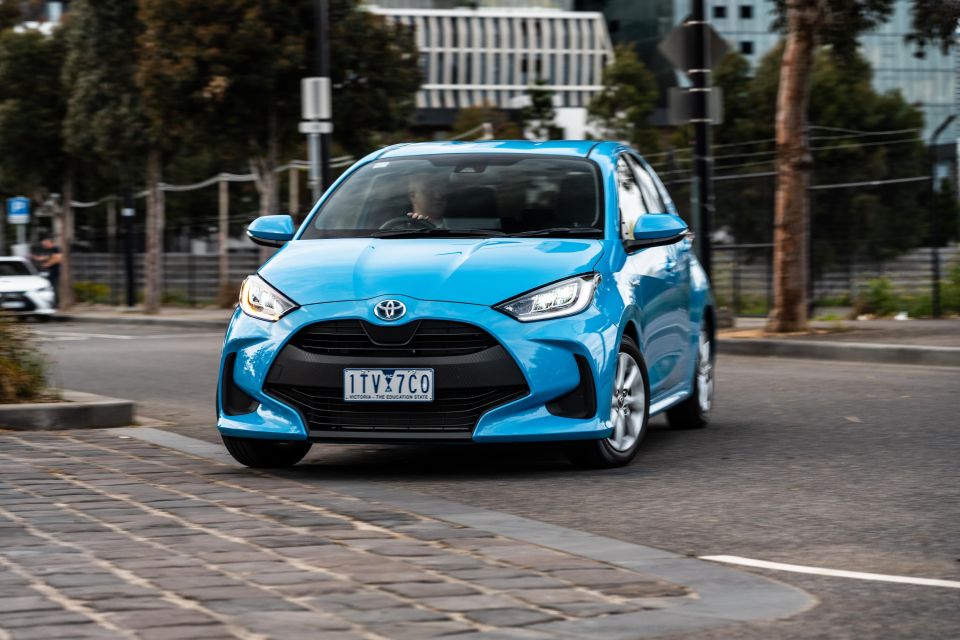
With responsive, fluid steering and a keen front end, the Yaris is quite happy around town. It threads through tight city streets and car parks with ease, and it’s generally quite comfortable too.
There’s a general maturity and refinement to how all TNGA-based Toyota products ride and handle, and the Yaris is no different. It’s certainly up to the task of commuting daily to and from the city with a bit of highway thrown in.
The 1.5-litre hybrid system is definitely the pick of the powertrain range, too. Not only is it incredibly efficient (I saw 3.6L/100km during my week of testing), the added torque from the small electric motor helps give the Yaris a welcome low-down boost when accelerating.

Through the seat of the pants the transition between power sources is nigh on seamless, if with a little of vibration typical of three-cylinder engines once the petrol motor fires up.
It can be a little noisy when this happens, too. Unlike most European competitors, the Yaris cockpit doesn’t sound very insulated from the gravelly note of the engine, even if its characterful thrum is more pleasant on the ears compared to some of Toyota’s Atkinson-Cycle four-cylinder units.
At least the Yaris uses a more energy dense lithium-ion battery pack, which means it can lean more on the electrified elements of its drivetrain for better EV range and performance. At times you can get up to 40km/h or so without using the petrol engine.
In general terms the Yaris is such an improvement over its predecessor, but several years after its launch it doesn’t shine as brightly as more competitors get updated and refined.
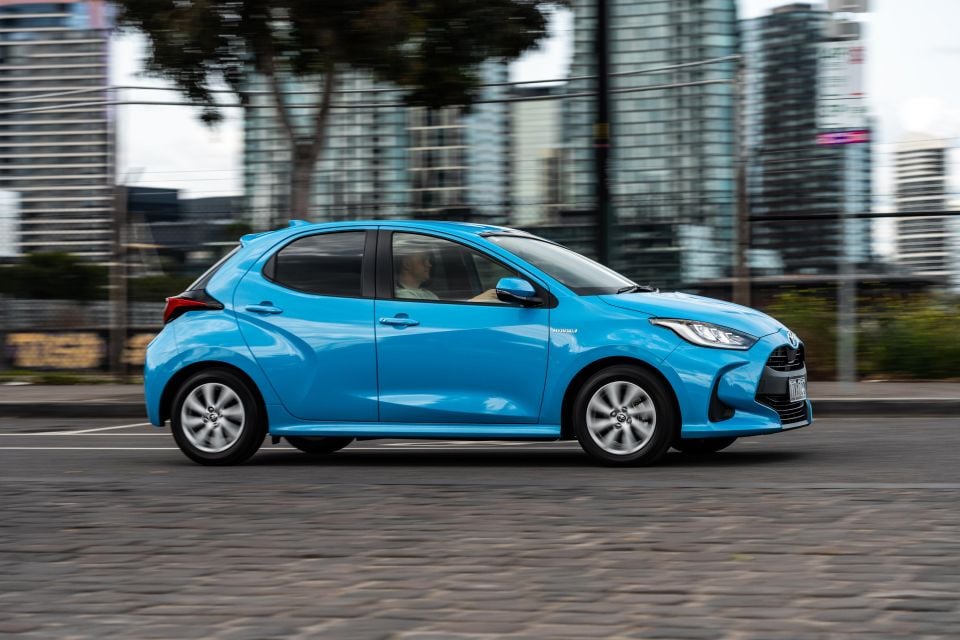
The Yaris cannot match the turbocharged performance of the Polo and high-spec versions of the Kia Rio and Suzuki Swift, and it’s not that big a step forward dynamically over something like a Mazda 2 despite being a lot younger.
At least Toyota includes a very full suite of assistance systems across the range, including adaptive cruise control and Lane Trace Assist, as well as the usual lane departure warning and lane-keep assist, and traffic sign recognition.
It’s a shame you have to step up to the top-spec ZR for blind-spot monitoring and rear cross-traffic alert, though the SX grade does pick up LED headlights over the base Ascent Sport.
Yaris Ascent Sport highlights:
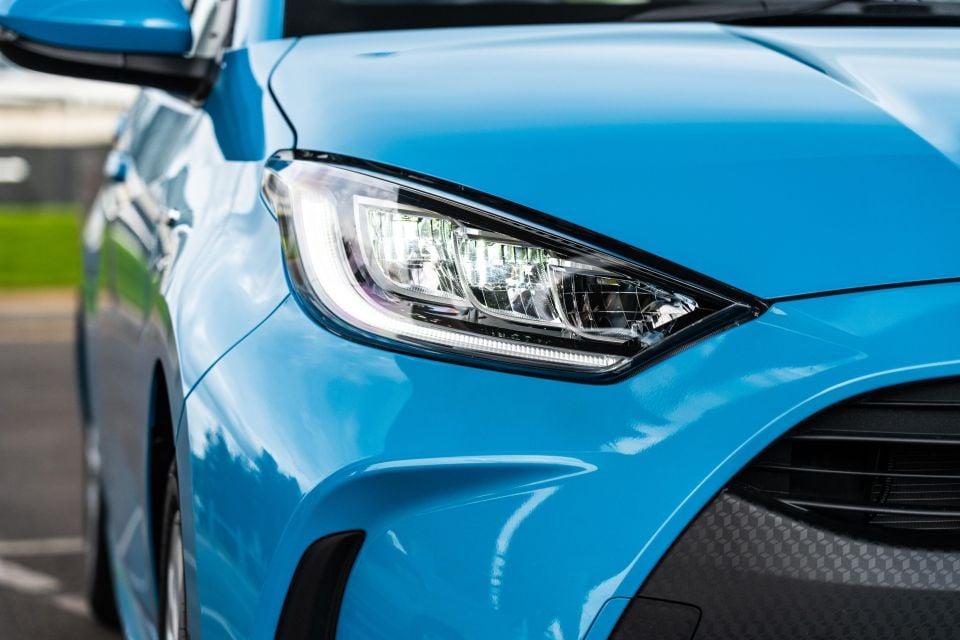

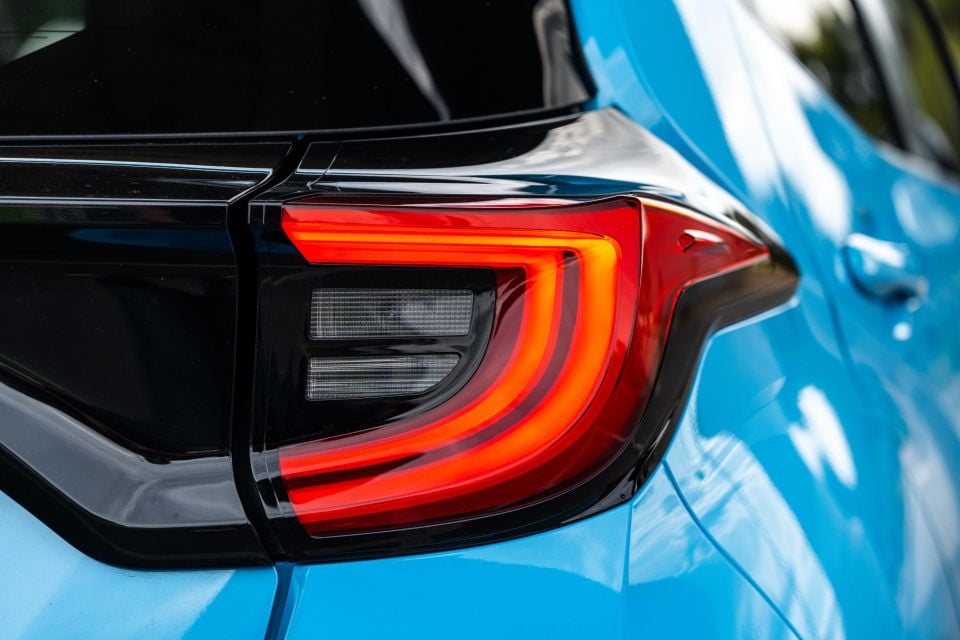
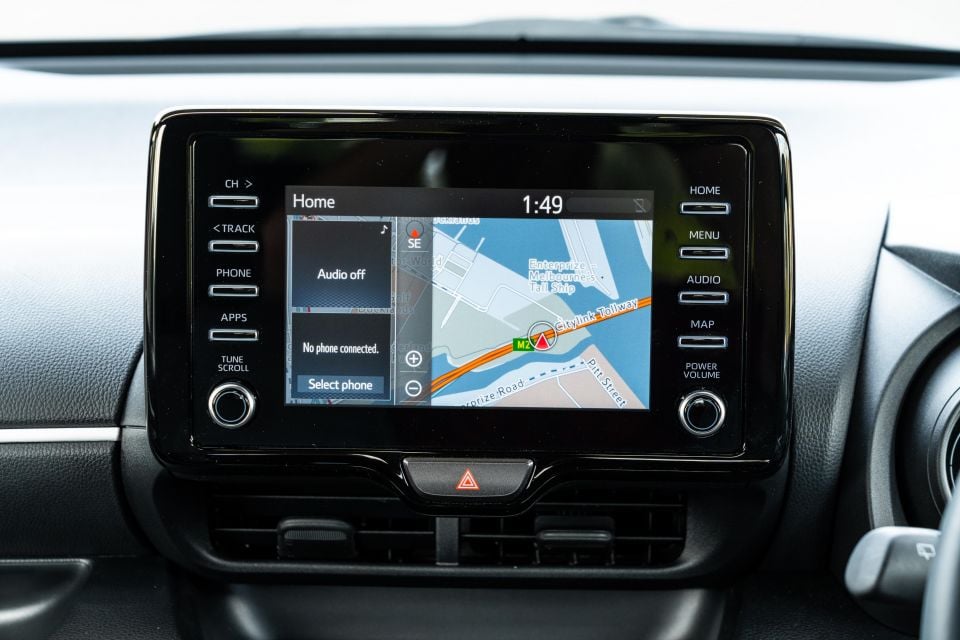
Where expert car reviews meet expert car buying – CarExpert gives you trusted advice, personalised service and real savings on your next new car.
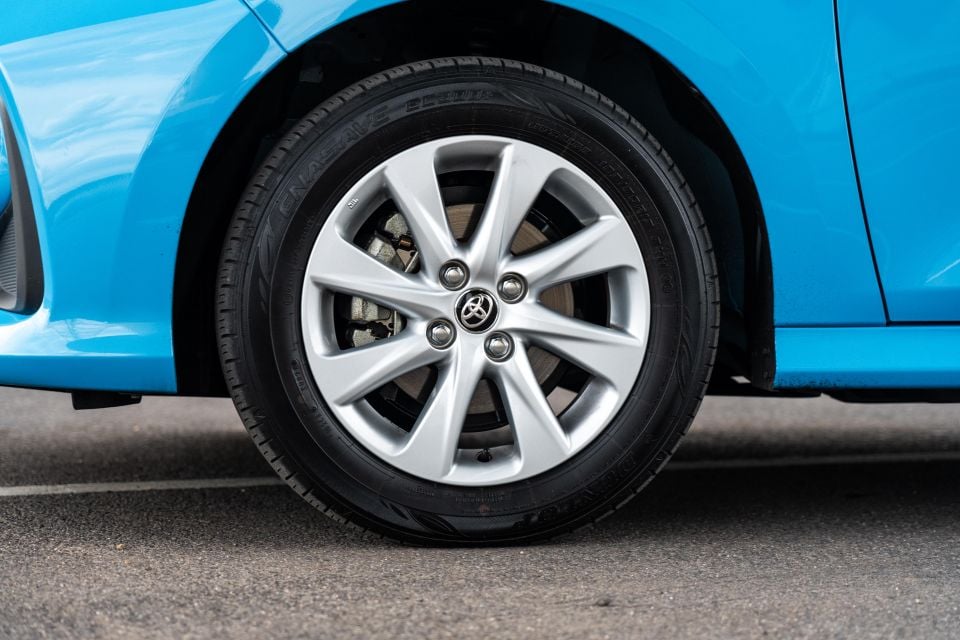
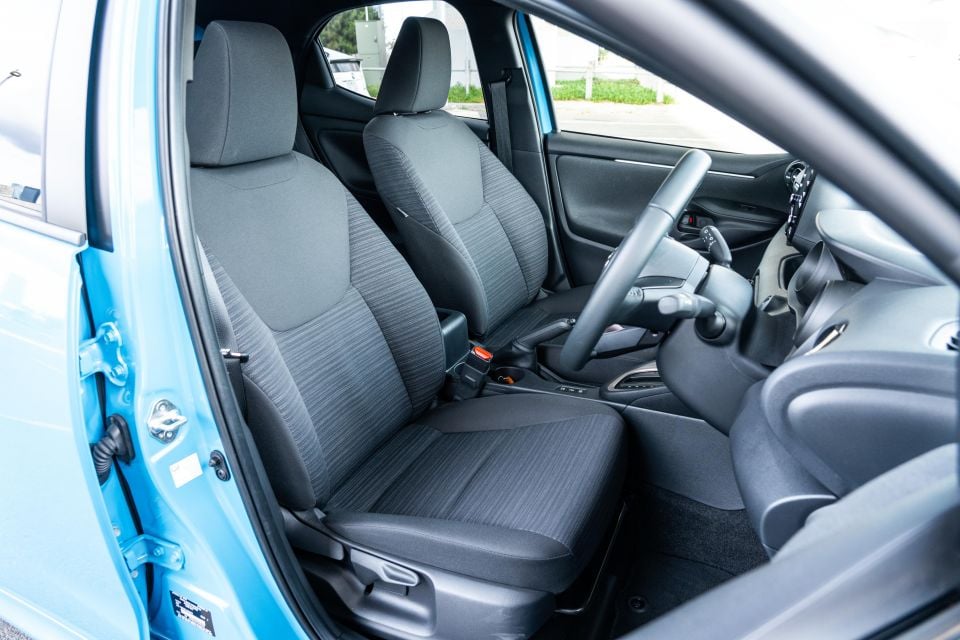
Yaris SX adds:
The Yaris wears a five-star ANCAP safety rating based on Euro NCAP tests conducted in 2020.
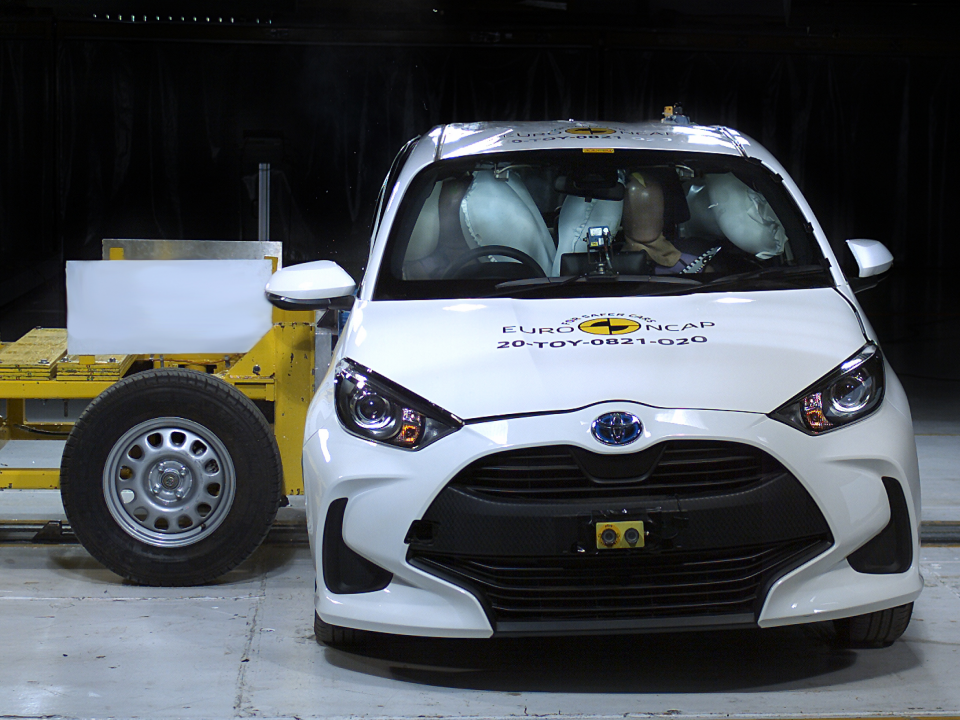
The adult occupancy protection score is 86 per cent, a child occupant protection score is 87 per cent, vulnerable road user protection score is 78 per cent and a safety assist score is 87 per cent.
Standard safety features include:
Yaris ZR adds:
Toyota backs its range with a five-year, unlimited-kilometre warranty.
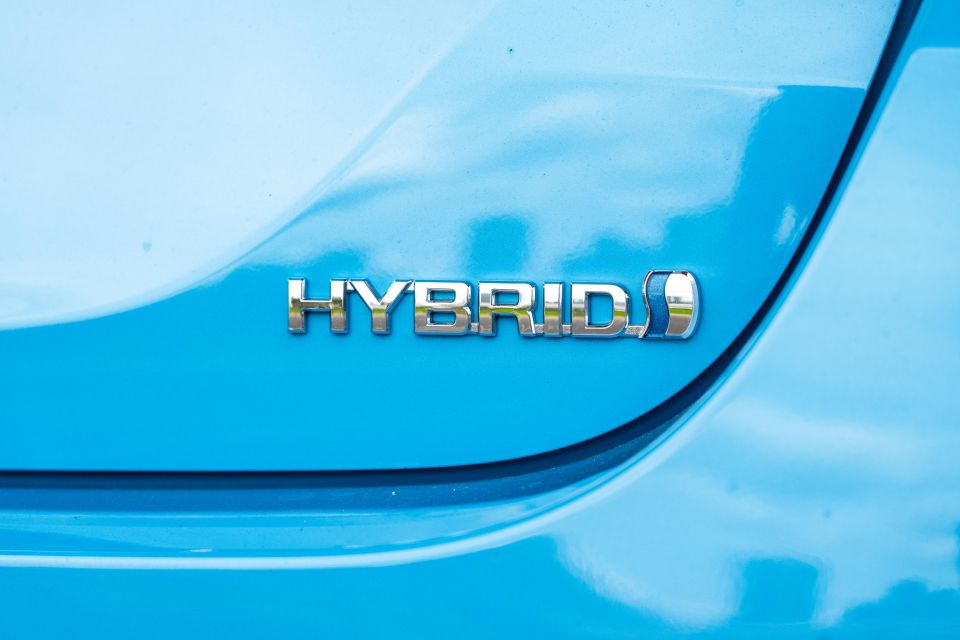
The warranty can be extended to seven years on the powertrain and up to 10 years for the hybrid battery if you service within the dealer network.
Servicing required every 12 months or 15,000km – whichever comes first. The first five services for the Yaris Hybrid cost $245 each, amounting to a total of $1225 over 60 months or 75,000 kilometres.
In terms of real-world fuel economy, I managed an excellent 3.6L per 100km (indicated) during my week of testing that covered over 300 kilometres, which is actually better than the brand’s claim of 3.8L/100km.
Even better, the Yaris Hybrid runs happily on 91 RON regular unleaded, making this one of the cheapest cars on the market to run.
There’s no disputing the Toyota Yaris remains a staple, and as competitor pricing continues to rise its value equation continues to improve.
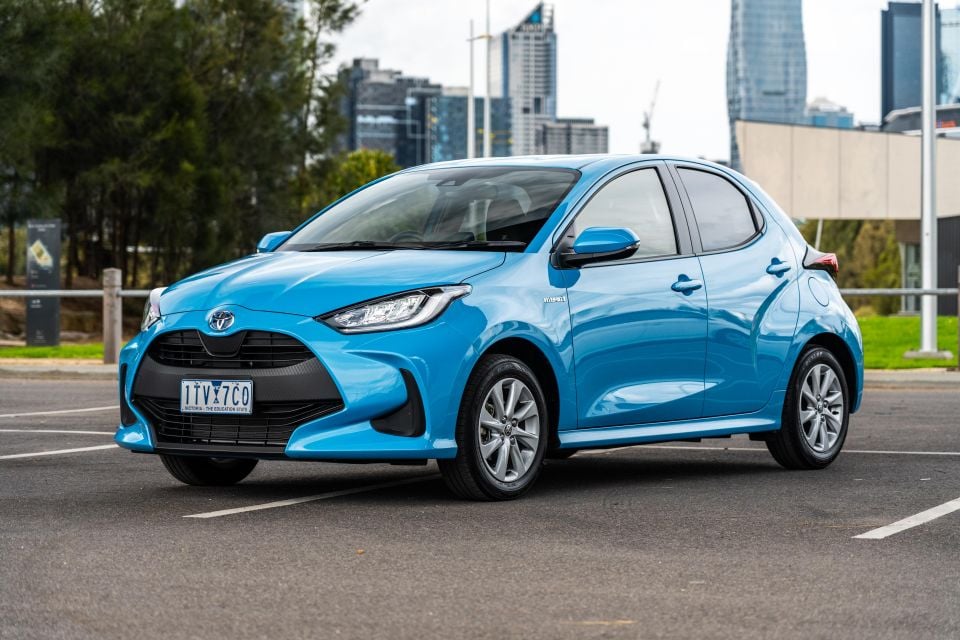
With that said, the cheap-feeling cabin and dated infotainment, on top of the tight cabin and boot mean you’re arguably better off looking at something like a Polo 85TSI Life for similar money, even if the VW can’t match the efficiency or cheap servicing of its Japanese rival.
More so, the mechanically identical and dimensionally similar Yaris Cross benefits from more space and an in-vogue SUV aesthetic for not much more. The new Corolla Hybrid with its more powerful 103kW
Our SX Hybrid tester is arguably the value pick of the range, bringing that class-leading fuel efficiency and desirable electrified performance for about $3200 cheaper on-road compared to the ZR Hybrid I tested a couple of years back, and it brings all of what you need plus some of what you want.
Despite its flaws, the Yaris is a joy to drive, has a full suite of safety and assistance systems (with the exception of blind-spot monitoring in this spec), and offers one of the cheapest servicing schedules in the segment.

Click the images for the full gallery
MORE: Everything Toyota Yaris
Where expert car reviews meet expert car buying – CarExpert gives you trusted advice, personalised service and real savings on your next new car.
James Wong is an automotive journalist and former PR consultant, recognised among Australia’s most prolific motoring writers.


Damion Smy
8 Hours Ago


Damion Smy
9 Hours Ago


Damion Smy
11 Hours Ago


Damion Smy
13 Hours Ago


Damion Smy
14 Hours Ago


Damion Smy
15 Hours Ago